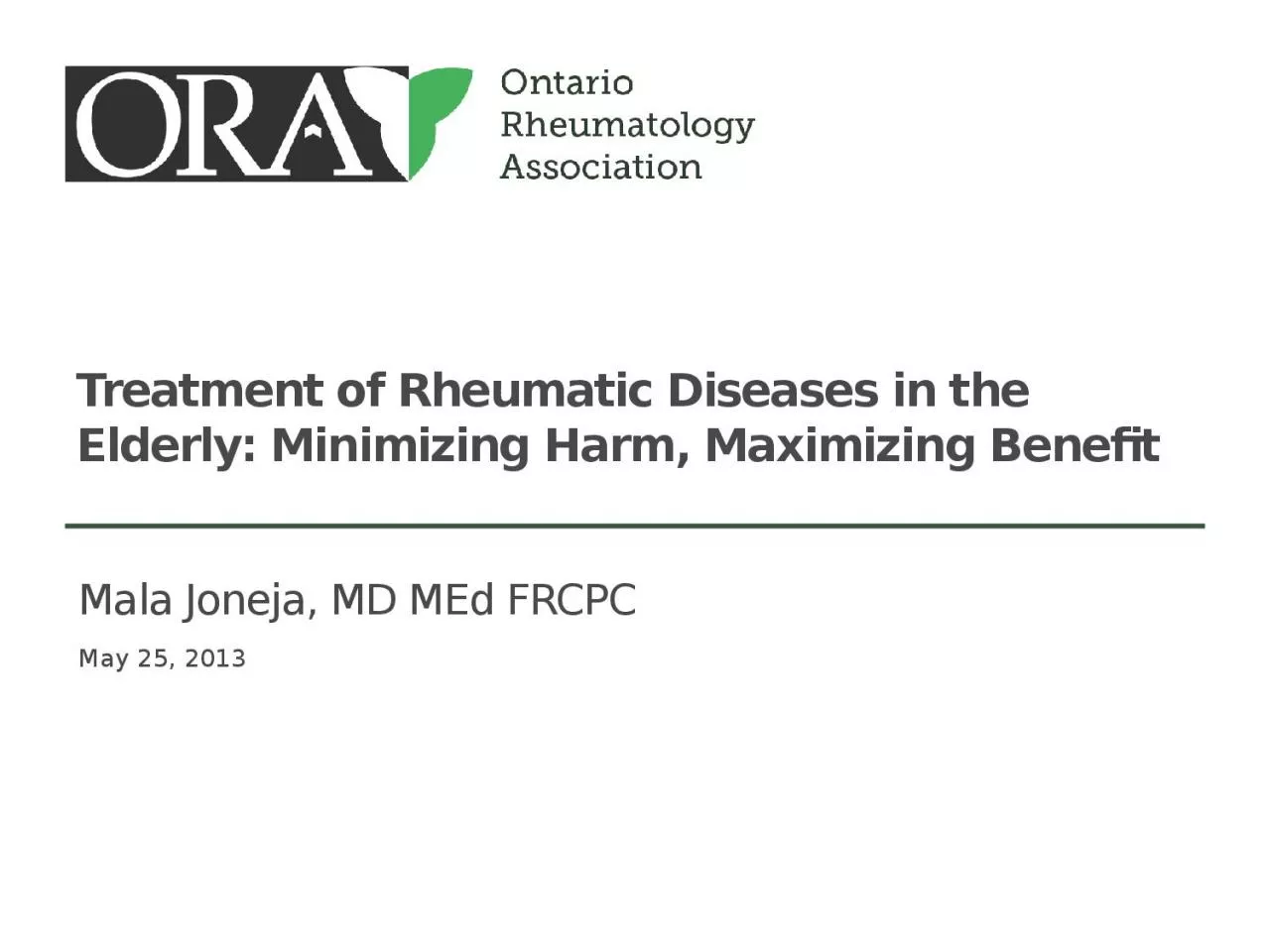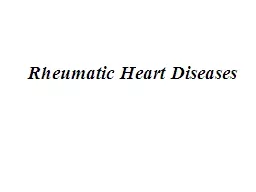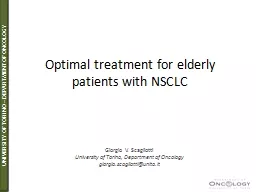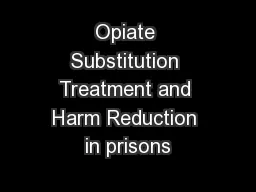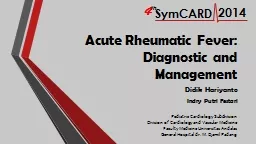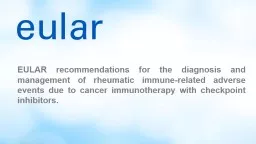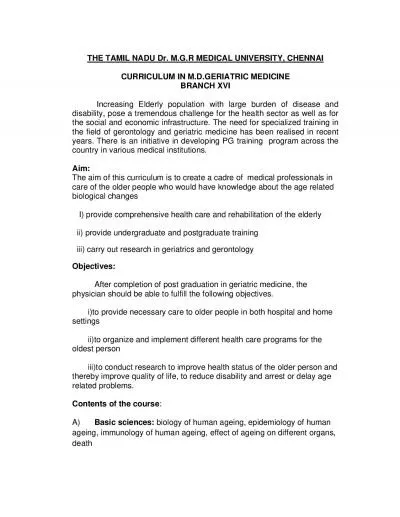PPT-Treatment of Rheumatic Diseases in the Elderly: Minimizing Harm, Maximizing Benefit
Author : SereneBeauty | Published Date : 2022-08-02
May 25 2013 Mala Joneja MD MEd FRCPC Identify factors that contribute to risk in the medical treatment of Rheumatic Diseases in the elderly population Identify
Presentation Embed Code
Download Presentation
Download Presentation The PPT/PDF document "Treatment of Rheumatic Diseases in the E..." is the property of its rightful owner. Permission is granted to download and print the materials on this website for personal, non-commercial use only, and to display it on your personal computer provided you do not modify the materials and that you retain all copyright notices contained in the materials. By downloading content from our website, you accept the terms of this agreement.
Treatment of Rheumatic Diseases in the Elderly: Minimizing Harm, Maximizing Benefit: Transcript
Download Rules Of Document
"Treatment of Rheumatic Diseases in the Elderly: Minimizing Harm, Maximizing Benefit"The content belongs to its owner. You may download and print it for personal use, without modification, and keep all copyright notices. By downloading, you agree to these terms.
Related Documents

